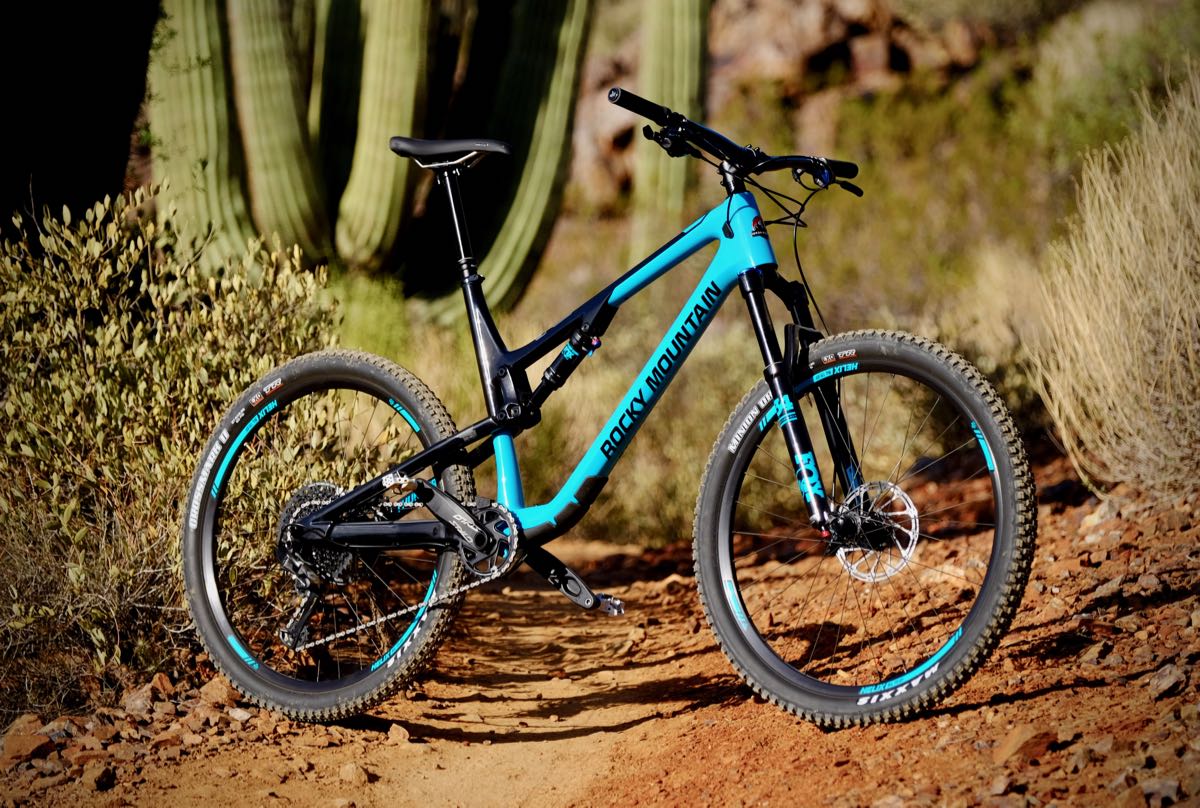For the last 90 days I have had the good fortune to swing a leg over Rocky Mountain’s new Thunderbolt nearly every day. In that time I pitted it against everything from low desert chunk to flowing forest singletrack. It may only look slightly different from its predecessor, but it is an entirely new beast.
Leave it to Rocky Mountain to position the 130mm all-carbon bike on the outer edge of their XC category. While it is certainly swift, light, and responsive, it’s not anywhere near as race ready as its 29er sibling, the Element. It might have been more XC-biased in years past, but Rocky’s latest 27.5 Thunderbolt is a bit more aggressive. I would say it is more closely related to the 140mm travel Instinct.

For 2018 the updates to the Thunderbolt were subtle but substantive. The frame received a comprehensive revamp with new tube shapes, cable routing, and shock mounts. It is still made with Rocky’s Smoothwall carbon technology which uses solid internal forms rather than inflatable bladders to shape the tubes. The hard internal structures permit a more even distribution of resin to help reduce weight and increase stiffness. It also allows Rocky to design more precise shapes both externally and internally. To that end, the new frame has a beefed-up bottom bracket joint with angular chines molded into the downtube for increased rigidity.
The one aspect of the new frame I noticed immediately was the new upper shock mount. In the previous frame, the shock mount was as bulbous as a bruised knee. To achieve the slender mount on the new frame, Rocky relocated the Ride 9 adjustment system to the lower bolt in the all-new and stiffer linkage.
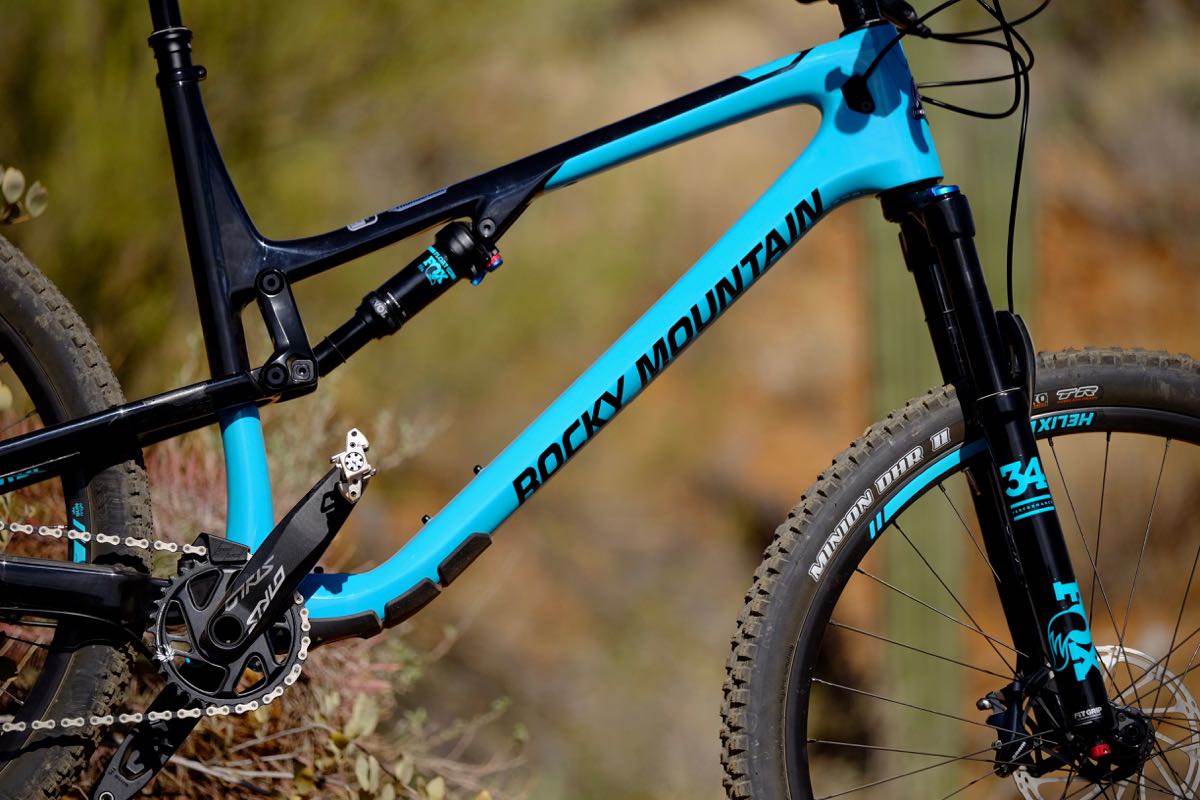
Several of the updates are not quite as obvious like the reworked kinematics. Rocky made minor changes to bolster anti-squat and give the suspension a flatter curve rate. As I noticed with the new Instinct, the Thunderbolt sits higher in the stroke than previous bikes. I expected a compromised top end, but small bump compliance remains sufficiently plush, even with my tendency to ride with the settings a wee stiff-legged. I attribute that to the new SmoothLink pivots which rotate on sealed bearings and not bushings as before. Overall, the suspension rate feels more predictable, tunable, and without burning too many words—better.
The new Thunderbolt line starts at $2,000 for the Alloy 10 model. At the top is the BC Edition at $6,000. My test bike is the Carbon 50 situated at the $4,500 mark. At that point it gets a Sram GX Eagle drivetrain, Sram Level TL brakes, and a DT 370 rear hub on Sun Helix TR25 SL rims. The squishy bits are provided by Fox. The Float DPS EVOL Performance shock is paired to a 34 Float Performance 130mm fork. Even the dropper post is a Fox Transfer Performance Elite. It feels like an evenly distributed parts spec for the price, although I long for a slightly better brake package when the downhills get spicy.
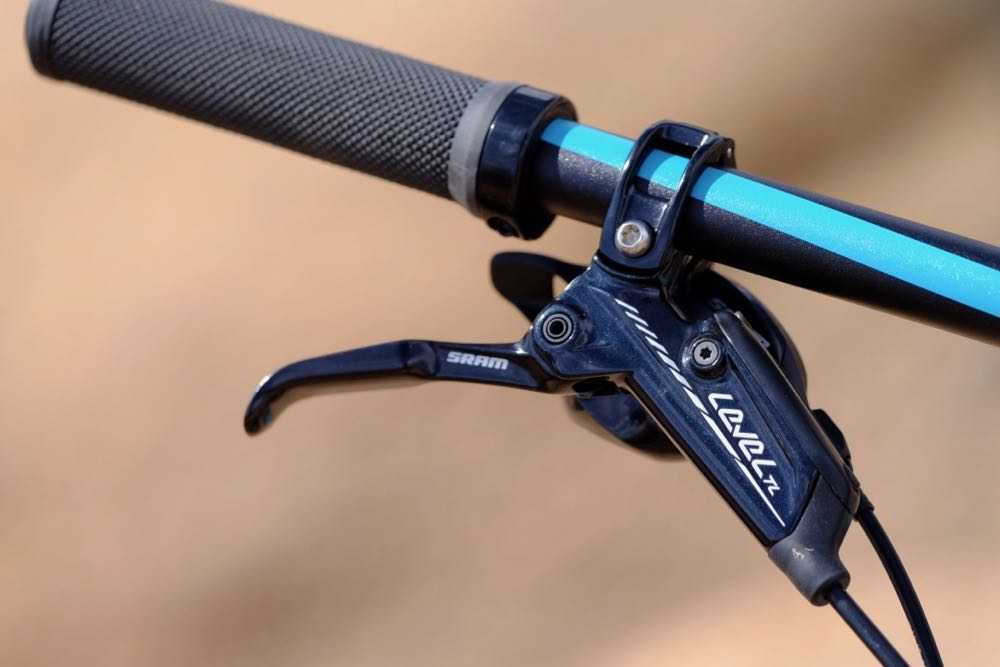
One of the things I have always liked about Rocky Bikes, and I know it makes them go faster, is the color-matching they place on every component. On the Carbon 50, there are little turquoise accents tip to tail. It’s a sharp looking machine. The new hidden pivots at the chain and seat stays are really slick.

Suspension setup and Ride 9 adjustments
It’s tough to convey impressions of geometry and handling without first putting those attributes within the context of the Ride 9 settings. Of the things I like most about Rocky Mountain bikes, their adjustable geometry system tops the list. It takes some time to figure out which setting works best for a given scenario, but making the adjustments is relatively quick and easy. I have used the system enough to know what I like and tend to toggle between positions 6 and 4. One is biased towards slack and progressive, the other steep and less progressive. That suits my duplicitous local terrain which is either buff and fast, or highly technical with not much in between.
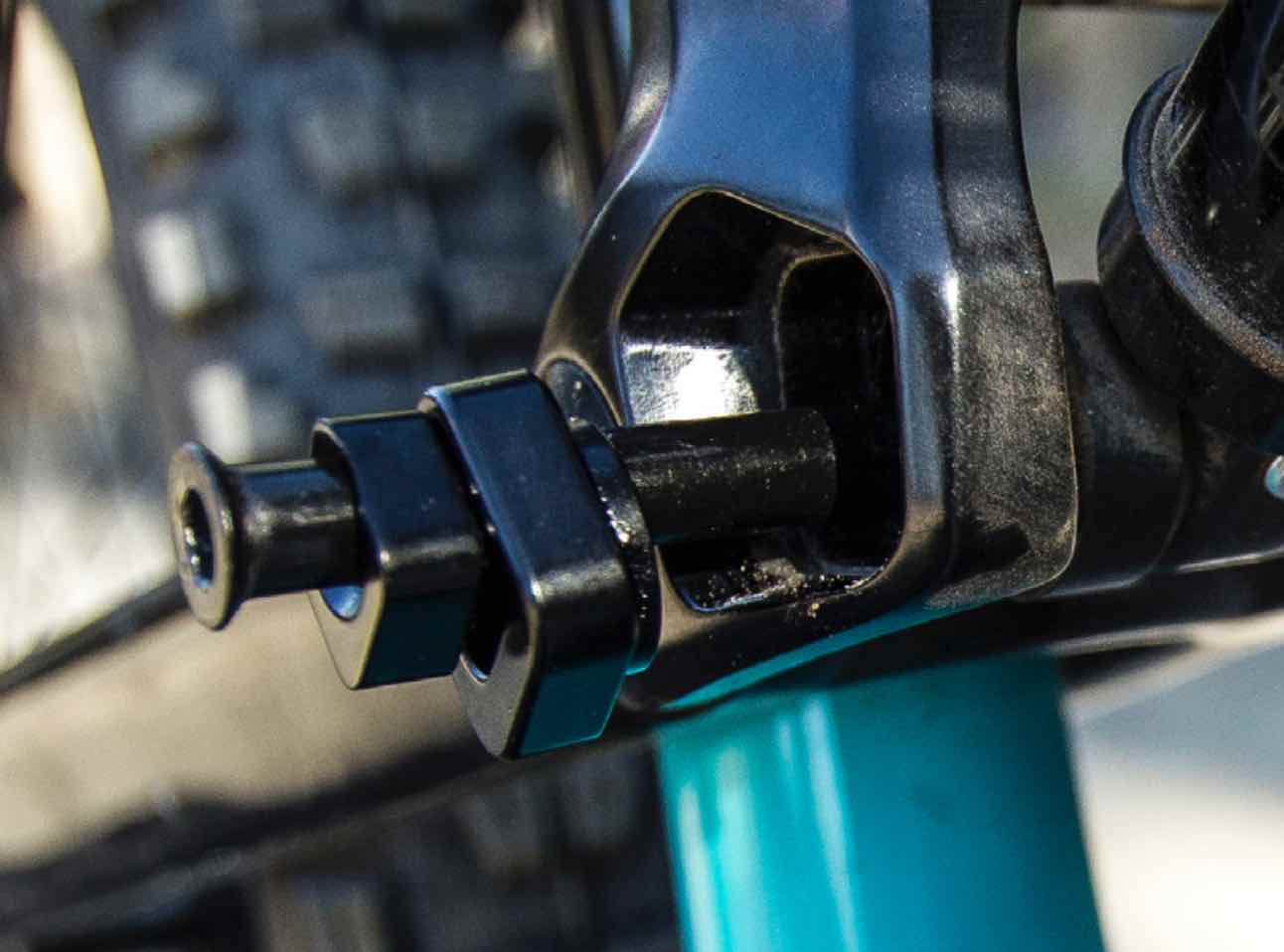
One of the challenges with the Ride 9 system is the inherent give and take of any particular setting. It becomes an exercise in managing pros and cons. Tweaks to head and seat angles also impact bottom bracket height and wheelbase length, if just slightly.

If I wasn’t inclined to fiddle with the Ride 9 pucks, the neutral setting of 5 offers a near perfect representation of what the bike feels like out of the box. Which is how it comes, anyway.
It didn’t take long to figure out my preferred sag setting. I landed on a spot around 23-25%. That’s stiffer than how I set up previous generations of Rocky bikes. In that setting, the ride is very smooth without any float or bob. I definitely think there is a unique feel to a Rocky Mountain bike. And while the Thunderbolt demonstrates an improvement to that feel, they didn’t alter it so much their current fans will not instantly identify with it.
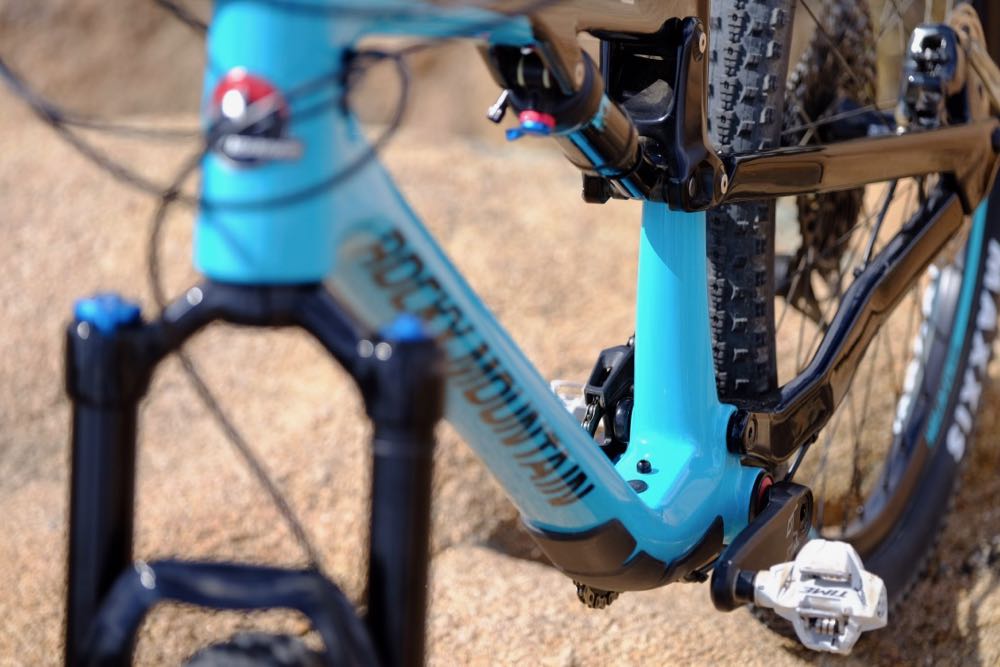
For my preferred style of riding, I tend to creep the Thunderbolt closer to it’s XC persona than the other direction. I think that is why I like it. It climbs beautifully and knocks down big miles with no problem.
On the trail
After a few rides I started to push the Thunderbolt into more aggressive terrain where it behaved very much like a full-on trail bike. It strikes me as a very versatile platform. Between the Ride 9 adjustments and a few tweaks to the suspension settings, the Thunderbolt transforms into a solid shredder. When fitted with a more aggressive tire, it became a whole new machine. If I kept it and wanted to push it into that type of terrain more regularly I might add a bit more width to the bars.

If asked to describe the Thunderbolt in one word, I would say it is—nimble. The 426mm stays are just short enough to give the bike snappy handling. Tight switchbacks are a piece of cake and quick line corrections are made with precision. I can also feel the improved stiffness of the entire platform, much of that attributed to the new one-piece Smoothwall seat stay assembly.
If I had any nits to pick, it would once again be with the kooky sizing. Never in my life have I fit an XL bike, but the Rocky XL fits like a glove. I barely get the dropper post to plunge into the frame far enough to work, which is a surprise because I am if anything—all leg.
Many of the things I perhaps didn’t instantly like I was able to remedy slightly with the Ride 9 system. One immediate complaint was with the bottom bracket height and my pedal-clipping tendencies. I think the BB height is probably perfect for most riders, but a quick adjustment gave me a tiny upward boost.
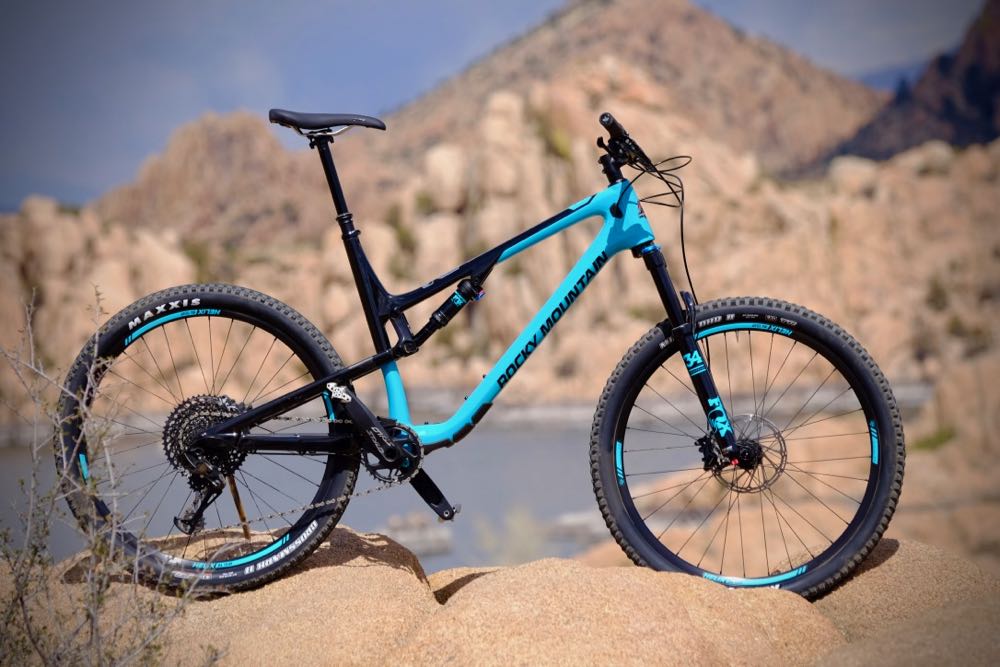
Final thoughts
Overall, I think Rocky Mountain did a great job refining what I thought was an already excellent bike. I didn’t notice many problems needing to be solved with the previous Thunderbolt, but the updated version found a few to fix. If you’re concerned with pedaling efficiency, climbing prowess, and sporty handling, but don’t want a pure XC bike, this might be your Huckleberry. At 28.4 pounds for my XL test bike, it’s even pretty light.
At $4,500 I think the Carbon 50 sits right at the tipping point where it offers much of the performance of its more expensive siblings at what is now a rather normal mid-priced number. By adding 10mm of travel to the Thunderbolt, Rocky gave it more reason to push outside typical XC parameters. And that makes it a very fun bike to ride.
